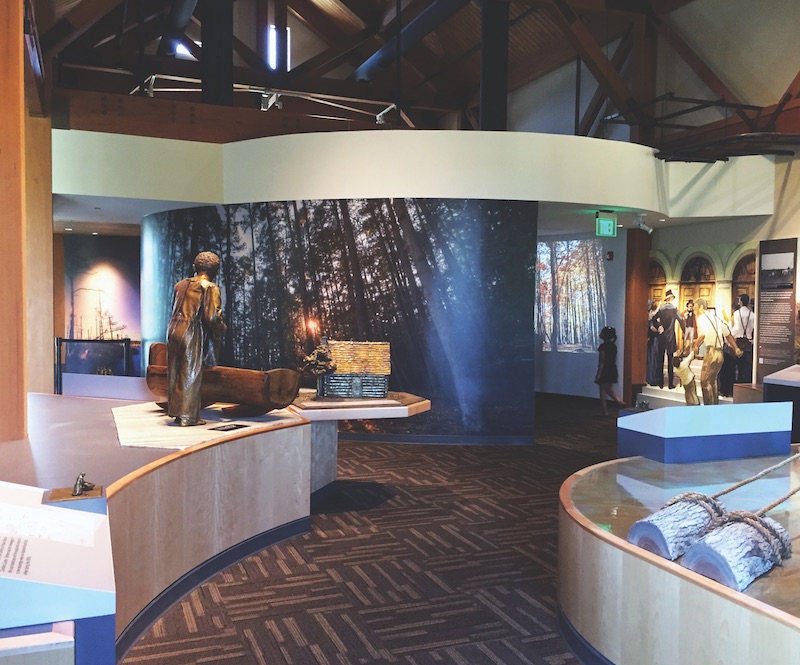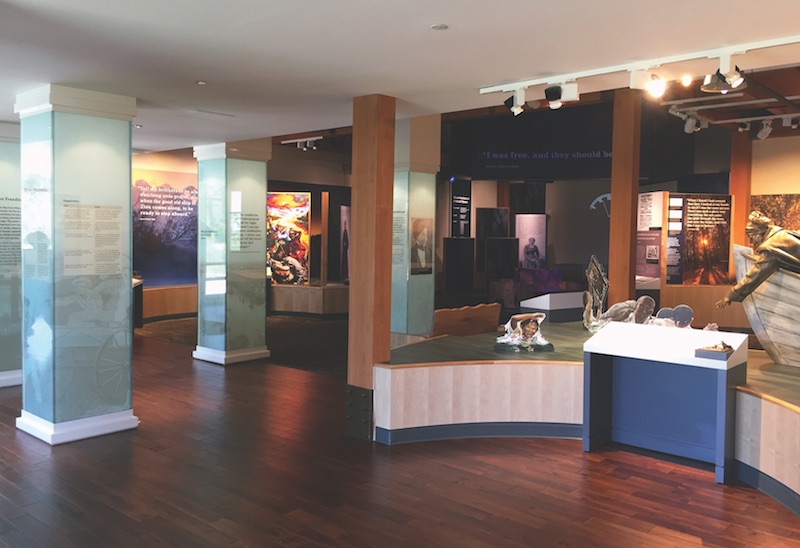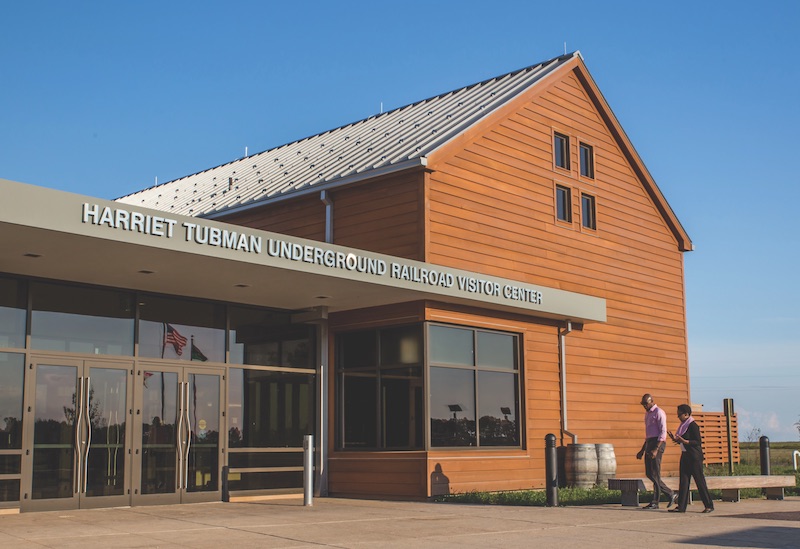The $21 million, 15,000-sf Harriet Tubman Underground Railroad Visitor Center in Church Creek, Md., uses engaging displays and exhibits to tell the story of Harriet Tubman’s life. The building’s design expresses the importance of traveling northward to escape the circumstances of slavery through an integrated site, building, and exhibit design.
The museum is conceived as a series of abstracted forms made up of two main structures, one administrative and one exhibit. The structures are joined by a shared entry plaza and terrace.
 Photo: Dorchester County Tourism.
Photo: Dorchester County Tourism.
The space between the buildings grows wider as visitors move north—a metaphor for freedom—while the view to the south is truncated by the splay of the building—meant to suggest a sense of oppression.
The design firm, GWWO Inc./Architects, used three volumes to memorialize the fates of the enslaved in the region: be sold, stay in fear of being sold, or run away. As visitors make their way north, they can take detours to other parts of the museum to discover and learn. After passing through the museum, visitors are directed toward a memorial garden that heads north before weaving through the site and returning to the beginning. This garden’s path is meant to represent Tubman’s circuitous routes and willingness to return to the region.
 Photo: Dorchester County Tourism.
Photo: Dorchester County Tourism.
A series of exhibit galleries, an orientation theater, a museum store, an information desk, a research library, offices, and support spaces are all included in the museum, which opened to the public in March.
 Photo: Dorchester County Tourism.
Photo: Dorchester County Tourism.
Related Stories
| Jun 12, 2014
Austrian university develops 'inflatable' concrete dome method
Constructing a concrete dome is a costly process, but this may change soon. A team from the Vienna University of Technology has developed a method that allows concrete domes to form with the use of air and steel cables instead of expensive, timber supporting structures.
| Jun 11, 2014
David Adjaye’s housing project in Sugar Hill nears completion
A new development in New York's historic Sugar Hill district nears completion, designed to be an icon for the neighborhood's rich history.
| Jun 9, 2014
Green Building Initiative launches Green Globes for Sustainable Interiors program
The new program focuses exclusively on the sustainable design and construction of interior spaces in nonresidential buildings and can be pursued by both building owners and individual lessees of commercial spaces.
| Jun 9, 2014
Eli Broad museum files $19.8 million lawsuit over delays
The museum, meant to hold Eli and Edythe Borad's collection of contemporary art, is suing the German company Seele for what the museum describes as delays in the creation of building blocks for its façade.
| Jun 4, 2014
Want to design a Guggenheim? Foundation launches open competition for proposed Helsinki museum
This is the first time the Guggenheim Foundation has sought a design through an open competition. Anonymous submissions for stage one of the competition are due September 10, 2014.
| May 29, 2014
7 cost-effective ways to make U.S. infrastructure more resilient
Moving critical elements to higher ground and designing for longer lifespans are just some of the ways cities and governments can make infrastructure more resilient to natural disasters and climate change, writes Richard Cavallaro, President of Skanska USA Civil.
| May 23, 2014
Big design, small package: AIA Chicago names 2014 Small Project Awards winners
Winning projects include an events center for Mies van der Rohe's landmark Farnsworth House and a new boathouse along the Chicago river.
| May 22, 2014
IKEA to convert original store into company museum
Due to open next year, the museum is expected to attract 200,000 people annually to rural Älmhult, Sweden, home of the first ever IKEA store.
| May 21, 2014
Gehry unveils plan for renovation, expansion of Philadelphia Museum of Art [slideshow]
Gehry's final design reorganizes and expands the building, adding more than 169,000 sf of space, much of it below the iconic structure.
| May 20, 2014
Kinetic Architecture: New book explores innovations in active façades
The book, co-authored by Arup's Russell Fortmeyer, illustrates the various ways architects, consultants, and engineers approach energy and comfort by manipulating air, water, and light through the layers of passive and active building envelope systems.
















